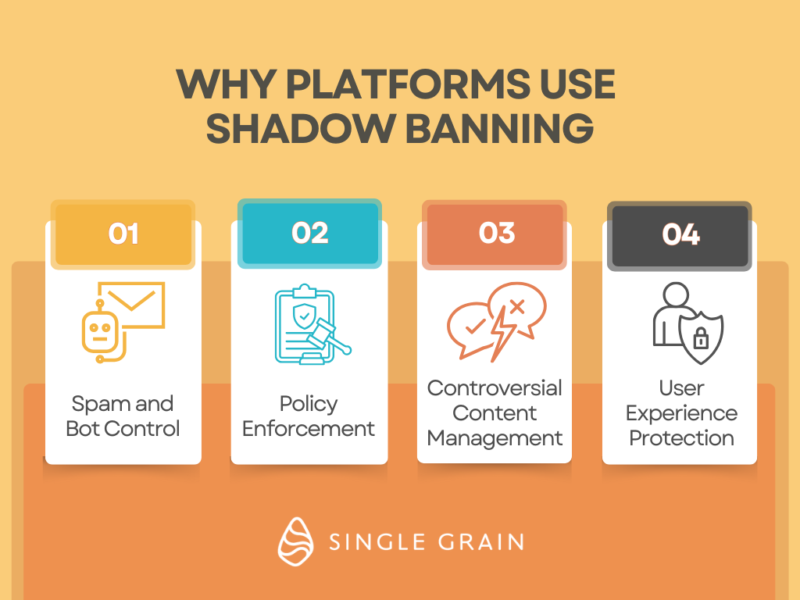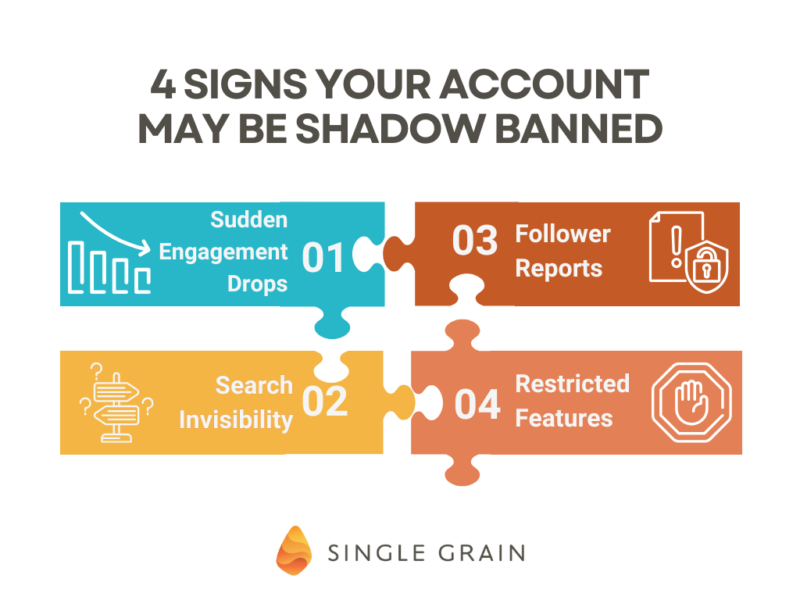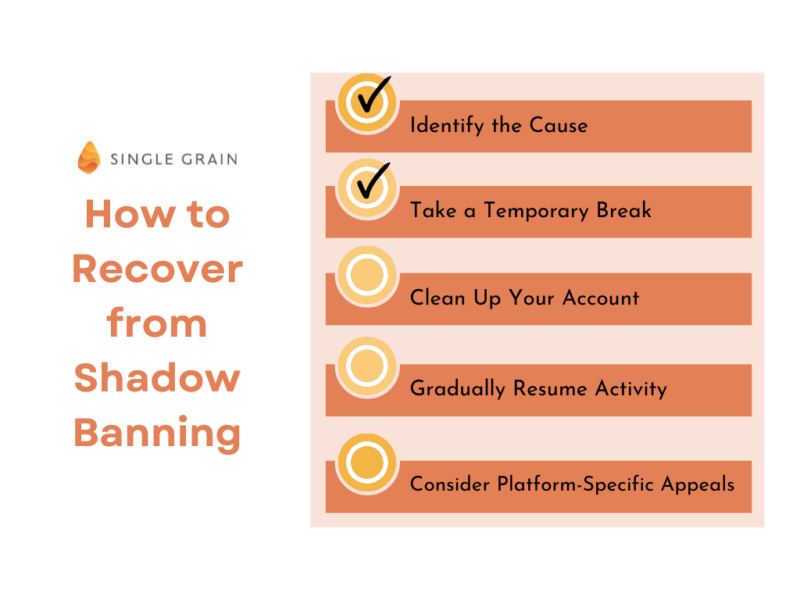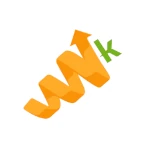What is Shadow Banning and How Can You Avoid It?
Have you noticed a sudden drop in your social media engagement? Are your posts seemingly invisible to everyone except your most loyal followers? You might be experiencing shadow banning—a mysterious form of content suppression that platforms rarely acknowledge but content creators frequently encounter. Unlike outright account suspension or content removal, shadow banning operates in the shadows, making it particularly frustrating to detect and address.
In today’s digital marketing landscape, social visibility is everything. Whether you’re building a personal brand, promoting a business, or sharing important information, understanding shadow banning is crucial to maintaining your online presence. This comprehensive guide will explain what shadow banning is, how to tell if you’ve been affected, and most importantly, how to prevent it from happening to your accounts.
Key Highlights
- Hidden Censorship: Shadow banning restricts content visibility without notifying creators, affecting engagement by up to 93-99% on some platforms
- Platform Patterns: While major platforms deny “shadow banning,” all use algorithms that can effectively shadow ban content deemed problematic
- Detection Signs: Sudden engagement drops, disappearance from search results, and content invisibility to others are key indicators of shadow banning
- Prevention Strategies: Following platform guidelines, using strategic hashtags, and maintaining authentic engagement can help avoid algorithmic penalties
- Recovery Tactics: Specific approaches to restore visibility if your account has been shadow banned, including temporary platform breaks
TABLE OF CONTENTS:
What Exactly is Shadow Banning?
Shadow banning—also known as stealth banning, ghost banning, or comment ghosting—is the practice of restricting a user’s content on social media platforms without their knowledge. Unlike traditional content moderation where posts are removed with notification, shadow banned content remains visible to the creator but is significantly limited in its reach to other users.
The term gained popularity around 2017-2018, particularly when politically conservative account owners alleged they were being systematically silenced on platforms like Twitter. While social media companies typically deny using “shadow banning” as an official practice, they do acknowledge that their algorithms impact what content is prioritized and shown to users.
As Yale researcher Tauhid Zaman explains, “More clandestine than a straightforward ban from a platform, shadow banning limits the broader visibility of a user’s content without their knowledge. A Facebook or Instagram post that’s been subjected to shadow banning would remain on the original poster’s profile page, but it would appear less, or not at all, in the timelines of other users.”
The impact can be dramatic. Internet policy analyst Monica Horten found that Facebook’s “feature block” function created a “sudden plunge” of 93–99% in the reach of certain UK-based Pages—”not much different from completely unpublishing the page.”
Why Platforms Use Shadow Banning

Social media platforms face enormous content moderation challenges. With billions of posts created daily, they rely on a combination of human reviewers and algorithmic systems to filter content. Shadow banning emerged as a tool to address several platform concerns:
- Spam and Bot Control: Limiting automated or spammy content without alerting the creators, who might otherwise simply create new accounts
- Policy Enforcement: Reducing the visibility of content that skirts platform guidelines without triggering the backlash that comes with outright removal
- Controversial Content Management: Limiting the spread of polarizing or potentially harmful content while avoiding accusations of censorship
- User Experience Protection: Preventing low-quality content from dominating feeds and search results
Ryan Sorrell, founder and publisher of the Kansas City Defender, notes that social media posts can be subject to shadow bans not only because of the issues they cover—including controversial topics—but also because their reporting uses “unminced language, without euphemisms.”
Signs Your Account May Be Shadow Banned

Detecting shadow banning can be challenging precisely because it’s designed to be difficult to identify. However, several indicators can help you determine if your content is being suppressed:
Sudden Engagement Drops
The most common sign is a dramatic and unexplained decrease in engagement metrics. If your posts typically receive a certain number of likes, comments, and shares, and those numbers suddenly plummet despite maintaining similar content quality and posting frequency, shadow banning may be the culprit.
Search Invisibility
Try searching for your account or content from another account (preferably one that doesn’t follow you). If your profile doesn’t appear in search results or requires typing your exact username, this could indicate shadow banning. Similarly, if your posts don’t appear under hashtags you’ve used, even when searching from another account, your content may be restricted.
Follower Reports
Sometimes, your most engaged followers will notice your absence from their feeds and mention it to you. If multiple followers report not seeing your content despite following you, this is a strong indicator of reduced visibility.
Restricted Features
In some cases, shadow banning may limit your ability to use certain platform features, such as liking or commenting on other users’ content. These restrictions may be subtle but can indicate that your account has been flagged.
Platform-by-Platform Shadow Banning Guide
Each social media platform has its unique approach to content moderation and algorithmic distribution. Here’s how shadow banning typically manifests across major platforms:
TikTok
TikTok’s content moderation policies don’t explicitly mention shadow banning individual users. However, they acknowledge that certain content may be deemed ineligible for the For You Page—the primary discovery mechanism on the platform. Content containing controversial keywords or that violates community guidelines may be hidden while under review.
Signs of TikTok shadow banning include:
- Videos stuck at zero views
- Content not appearing on the For You Page
- Dramatic decrease in video completion rates
- Hashtag searches not showing your content
Instagram has publicly denied shadow banning accounts but acknowledges its algorithm attempts to automatically remove posts featuring suggestive or illegal content, spam, banned hashtags, and copyright infringement. In February 2024, Meta began to restrict content on Instagram that it deemed “political,” which generated significant backlash, especially from users whose posts about controversial topics were demoted or removed.
Signs of Instagram shadow banning include:
- Posts not appearing in hashtag searches
- Significant drop in reach for stories and posts
- Content not appearing on Explore pages
- Reduced visibility in followers’ feeds
Twitter/X
While Twitter (now X) has claimed not to shadow ban, users continue to report content suppression on the platform. Their content moderation rules restrict people from uploading hateful or illegal posts, and the platform’s algorithmic timeline can significantly impact content visibility.
Signs of Twitter/X shadow banning include:
- Tweets not appearing in search results
- Replies missing from conversation threads
- Significant reduction in impressions
- Content not appearing in followers’ timelines
YouTube
YouTube can temporarily hide videos with controversial keywords or potentially harmful content while they’re under review. The platform uses a combination of machine-learning algorithms and human reviewers to evaluate content. Videos that violate the terms of service may be removed entirely or age-restricted, effectively limiting their reach.
Signs of YouTube shadow banning include:
- Videos not appearing in search results
- Dramatic drop in suggested video placements
- Reduced notification delivery to subscribers
- Demonetization without clear policy violations
Facebook doesn’t have explicit shadow banning policies, but acknowledges that its algorithm tries to remove controversial or spammy posts. The platform has also deleted accounts entirely for sharing harmful or fake content. Facebook’s News Feed algorithm can effectively shadow ban Pages and profiles by dramatically reducing their organic reach.
Signs of Facebook shadow banning include:
- Page posts reaching only a tiny fraction of followers
- Content not appearing in Group feeds
- Posts not showing up in friends’ News Feeds
- Inability to boost or promote posts
10 Effective Strategies to Avoid Shadow Banning
While there’s no guaranteed way to prevent shadow banning, following these best practices can significantly reduce your risk:
1. Know the Rules
The easiest way to prevent shadow banning is to learn each social media platform’s community guidelines and abide by them. Familiarize yourself with prohibited content categories and engagement practices. Most platforms publish comprehensive guidelines that outline what’s allowed and what isn’t.
2. Develop a Strategic Hashtag Approach
Hashtags can be powerful visibility tools, but they can also trigger shadow banning if misused:
- Don’t include too many hashtags in a post (stick to 5-10 relevant tags)
- Avoid using tags that aren’t related to your content
- Research potentially banned hashtags before using them
- Test hashtags by searching for them—if the platform sends a warning or shows no results, avoid that tag
3. Create Original, High-Quality Content
Plagiarism and copyright infringement can quickly get you shadow-banned. Focus on creating completely original content that provides value to your audience. If you want to use portions of someone else’s work, review the platform’s copyright rules and provide proper attribution.
4. Maintain Consistent, Non-Spammy Posting Habits
Algorithms flag accounts that display bot-like behavior. Avoid:
- Uploading the same posts repeatedly
- A mass following or unfollowing of accounts at once
- Posting generic or automated comments
- Using misleading headlines or thumbnails (clickbait)
Instead, develop a consistent posting schedule that feels natural and authentic.
5. Foster Genuine Engagement
The more genuine engagement your content receives, the less likely platforms are to restrict your visibility. Algorithms track metrics such as likes, comments, and shares to gauge audience interest. Focus on:
- Responding to comments on your posts
- Engaging meaningfully with other creators’ content
- Building community through authentic interactions
- Creating content that encourages conversation
6. Optimize Your Account Settings
Several account-level settings can help prevent shadow banning:
- Register as a professional or business account when possible
- Complete all profile fields and verification steps
- Regularly review account status for recommendation violations
- Enable two-factor authentication to demonstrate account legitimacy
7. Use Content Warnings Appropriately
When sharing potentially sensitive content, use platform-provided content warning features. This signals to algorithms you responsibly handle challenging material:
- Make warnings clear and specific
- Place them prominently with easy-to-read text
- Use captions to provide context
- Preview warnings before posting to ensure they’re effective
8. Monitor Your Analytics Closely
Regular performance metrics analysis can help you catch shadow banning early:
- Track engagement rates across posts
- Note any sudden drops in reach or impressions
- Compare performance to similar accounts in your niche
- Use platform-provided analytics tools to identify patterns
9. Diversify Your Social Media Presence
Don’t put all your eggs in one platform basket. Maintain active profiles across multiple networks and build direct communication channels with your audience:
- Develop an email list
- Create a website or blog
- Establish presence on emerging platforms
- Cross-promote content across networks
10. Take Regular Platform Breaks
Constant activity can sometimes trigger algorithmic flags. Occasional breaks can reset algorithm perceptions:
- Schedule short periods of reduced posting
- Use scheduling tools to maintain presence during breaks
- Return with fresh, high-quality content
- Gradually rebuild engagement after breaks
How to Recover from Shadow Banning

If you suspect you’ve been shadow-banned, don’t panic. Most shadow bans are temporary, lasting from a few days to a few weeks. Here’s how to address the situation:
Identify the Cause
Review your recent content and activities to identify potential triggers:
- Did you use banned hashtags?
- Have you posted controversial content?
- Did you engage in rapid following/unfollowing?
- Have you received community guideline violations?
Take a Temporary Break
Stepping away from the platform for 48-72 hours can sometimes reset algorithmic penalties. During this time:
- Don’t post new content
- Limit engagement with other accounts
- Use the time to plan future content strategy
- Research platform best practices
Clean Up Your Account
Audit your profile and remove potentially problematic elements:
- Delete posts that may violate guidelines
- Remove banned hashtags from previous posts
- Update your bio to ensure compliance
- Review and potentially remove questionable followers
Gradually Resume Activity
When returning to the platform, start slowly:
- Post high-quality, uncontroversial content
- Engage authentically with your community
- Monitor performance metrics closely
- Increase posting frequency gradually as engagement improves
Consider Platform-Specific Appeals
Some platforms offer formal appeal processes:
- Instagram: Report a Problem through Settings
- TikTok: Submit feedback through the app
- YouTube: Appeal through Creator Studio
- Twitter/X: Submit a support ticket
The Ethics and Future of Shadow Banning
Shadow banning raises important questions about transparency, free speech, and the power of platforms to shape public discourse. Research from Yale SOM’s Tauhid Zaman shows how shadow banning can shift users’ positions or increase overall polarization by selectively muting and amplifying posts in ways that appear neutral to outside observers.
These practices disproportionately impact marginalized communities, as Black TikTok creators and LGBTQ+ content creators on Instagram have frequently reported. As a veiled form of content moderation, shadow bans make it more difficult to hold platforms accountable for restricting already marginalized voices.
The future may bring increased regulatory scrutiny of these practices. As Zaman notes, “Using this paper, policymakers can articulate what kinds of recommendation systems to allow, and what kinds of shadow bans to allow.” He advocates for quantifying content algorithms as a regulatory approach.
Tools and Resources to Monitor Your Account Health
Several third-party tools can help you detect and address shadow banning:
- Shadowban Scanner: A Chrome extension for monitoring content reduction on Twitter/X
- HiSubway’s Twitter Shadowban Test: Tests your account for various types of visibility restrictions
- Triberr: Helps benchmark your content’s reach against similar accounts
- Social Blade: Tracks analytics across multiple platforms to identify unusual patterns
Additionally, most platforms provide native analytics tools that can help you monitor your reach and engagement over time.
Navigate Ad Challenges and Shadow Banning Concerns with Karrot.ai
Shadow banning represents one of the most challenging aspects of social media marketing in 2025. While platforms may not officially acknowledge the practice, the algorithmic suppression of content is very real and can significantly impact your digital marketing efforts.
By understanding how shadow banning works, monitoring your accounts for signs of restriction, and implementing the prevention strategies outlined in this guide, you can maintain your social media visibility and continue to reach your audience effectively.
Remember: social media algorithms constantly evolve, so staying informed about platform changes and best practices is essential for long-term success. Focus on creating valuable, authentic content that genuinely engages your audience, and you’ll be well-positioned to navigate the complexities of social media visibility.
For businesses running paid media campaigns, particularly on LinkedIn, these shadow-banning concerns add another layer of complexity to your marketing efforts. If you’re struggling with ad performance on social platforms, consider exploring personalized solutions like Karrot.ai, which helps transform your LinkedIn ads with 1-1 personalized content that can bypass some of the algorithmic challenges of traditional social media marketing.
Need help optimizing your digital marketing strategy beyond social media? Contact Single Grain for a comprehensive approach that integrates SEO, content marketing, and paid media to ensure your brand’s message reaches your target audience across all channels.
Shadow Banning FAQs
-
What is shadow banning, and how is it different from a regular ban?
Shadow banning is when platforms quietly limit your content’s visibility without notifying you. Your posts stay on your profile but get suppressed in algorithmic distribution like the News Feed, Explore, or For You Page. It’s different from a suspension because nothing is removed, yet reach and impressions can nosedive – sometimes by 93-99%. Machine learning moderation and content review drive most of these decisions.
-
What are the signs of shadow banning, and how can you tell if you're shadow banned?
Look for sudden, unexplained drops in reach and impressions, disappearance from hashtag pages, and non-followers needing your exact handle to find you. Confirm by checking from a non-follower account, testing hashtags, and reviewing engagement metrics against your baseline. Follower reports and subtle feature limits (likes, comments) also signal it. Those are the core signs of shadow banning across major platforms.
-
How to avoid shadow banning on Instagram, TikTok, YouTube, and X?
To avoid shadow banning, follow each platform’s community guidelines, post original content, and skip copyright infringement. Use 5-10 relevant hashtags, avoid banned or unrelated tags, and don’t paste the same block every time. Maintain steady, non-bot-like behavior, enable two-factor authentication, and engage genuinely. Monitor analytics for anomalies in reach and impressions, and use content warnings for sensitive topics.
-
What triggers a shadow ban, and which behaviors look bot-like to algorithms?
Common triggers for a shadow ban include spammy or banned hashtags, repetitive posts, mass follow/unfollow, generic auto-comments, clickbait, and copyright infringement. Algorithms flag bot-like behavior and may demote borderline or controversial content during content review. Misaligned tagging and excessive automation are frequent culprits. Keep activity human, within guidelines, and use clear content warnings to reduce risk and maintain visibility.
-
How do you recover from a shadow ban without losing momentum?
You can recover from a shadow ban by pausing automation, removing questionable hashtags, and deleting duplicate or low-quality posts. Take a brief platform break, re-read community guidelines, and avoid bot-like behavior when you return. Rebuild trust with genuine engagement and a consistent, sustainable cadence. Track reach and impressions; when metrics stabilize, scale posting back up gradually.
-
What is a shadow ban on Instagram, and how does it affect Explore and hashtag reach?
On Instagram, a shadow ban means your posts don’t surface in hashtag searches or the Explore page for many users. You’ll notice sharp drops in story and post reach even though everything stays on your profile. Triggers include spam signals, banned tags, and policy issues like copyright infringement. Audit hashtags, post original content, and review account status for recommendation violations.
-
What is shadow banning on TikTok's For You Page, and why do videos get stuck at zero views?
On TikTok, shadow banning shows up as videos excluded from the For You Page, sometimes stuck at zero views while under review. Machine-learning moderation and human content review can throttle distribution temporarily. Reduce risk by following guidelines, avoiding flagged keywords, keeping edits original, and nurturing completion rates. Check analytics for FYP traffic drops to confirm the pattern.
-
Does using certain hashtags cause shadow banning, and how should I test them safely?
Yes – using certain hashtags can contribute to shadow banning if they’re banned, misleading, or irrelevant. Test safely by searching the tag: if you see a warning or no fresh results, skip it. Stick to 5-10 relevant tags, rotate sets, and avoid copying giant blocks. Make sure your tags match the content; mismatches look spammy to algorithms.
-
Should you keep posting during shadow banning, or take a short break?
During suspected shadow banning, don’t power through blindly – pause aggressive posting and troubleshoot first. A short break can help algorithmic distribution reset while you fix triggers like automation, duplicate uploads, or misused hashtags. Keep light, authentic engagement so the account stays active. Resume gradually and watch engagement metrics; if reach improves, return to your normal cadence.
-
Which account settings and security steps help avoid shadow banning across platforms?
To help avoid shadow banning, shore up account trust signals and settings. Complete your profile, switch to a professional or business account, verify identity when available, and enable two-factor authentication. Regularly review account status and recommendation notices, then fix any violations. These steps help algorithms treat you as legitimate, improving distribution in News Feed, Explore, and For You surfaces.




